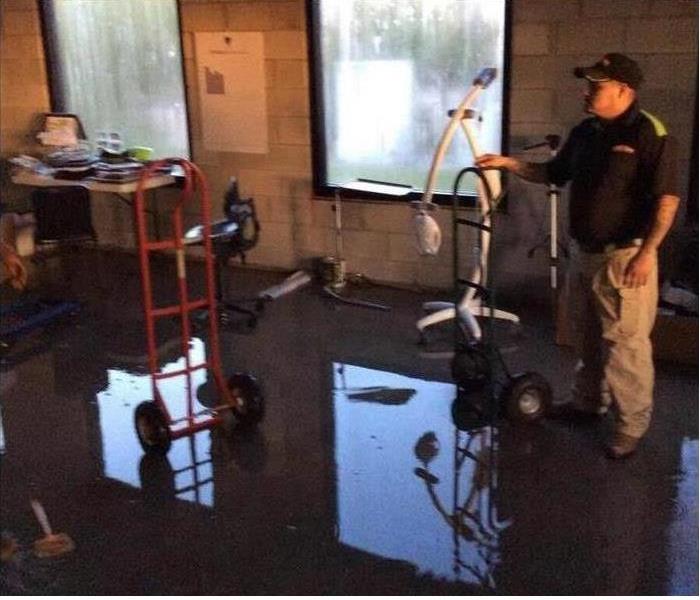How To Minimize the Risk of Secondary Damage
7/18/2022 (Permalink)
A flood or burst pipe can cause significant water damage inside any Sebastian, FL, business. Excessive water exposure can be particularly problematic because moisture is an essential ingredient for black mold growth. To help prevent secondary damage and the need for mold remediation services, it’s essential that the professional restoration crew you hire performs a thorough cleanup that incorporates essential procedures. If your building features tile, you can also complete important maintenance to help reduce the risk of extensive mold contamination.
Removal of Saturated Materials
The cleanup team should promptly remove all wet items from the water-damaged area. Because mold is adept at hiding, it’s essential to discard saturated building materials, including the following items:
- Drywall and baseboards
- Insulation
- Carpets
Replacing these components helps eliminate potential undetected moisture zones behind walls and under flooring where mold can proliferate.
Drying the Affected Space
High humidity and condensation can also result in black mold growth. To help prevent this dilemma, it’s essential to maintain adequate air circulation during the cleanup process. Remediation professionals can utilize fans and dehumidifiers to help remove excessive moisture. They can also employ moisture meters to verify the site is dry before installing new insulation, drywall and carpet.
Proactive Tile Care
Tile floors and walls are also susceptible to secondary damage after flooding. Because cement-based grout is porous, it’s important to take proactive measures to help shield tile from water damage.
Unless it’s properly protected, water can penetrate through grout and flood under the tile structure. This can undermine its stability and create an ideal environment for mold proliferation. To help reduce this risk, you should routinely apply sealant to any tile work inside your building.
Effective Strategies
No business owner wants to endure mold remediation. Fortunately, there are a few strategies that both property owners and flood cleanup crews can employ to help reduce the risk of black mold growth and its subsequent damage.






 24/7 Emergency Service
24/7 Emergency Service
